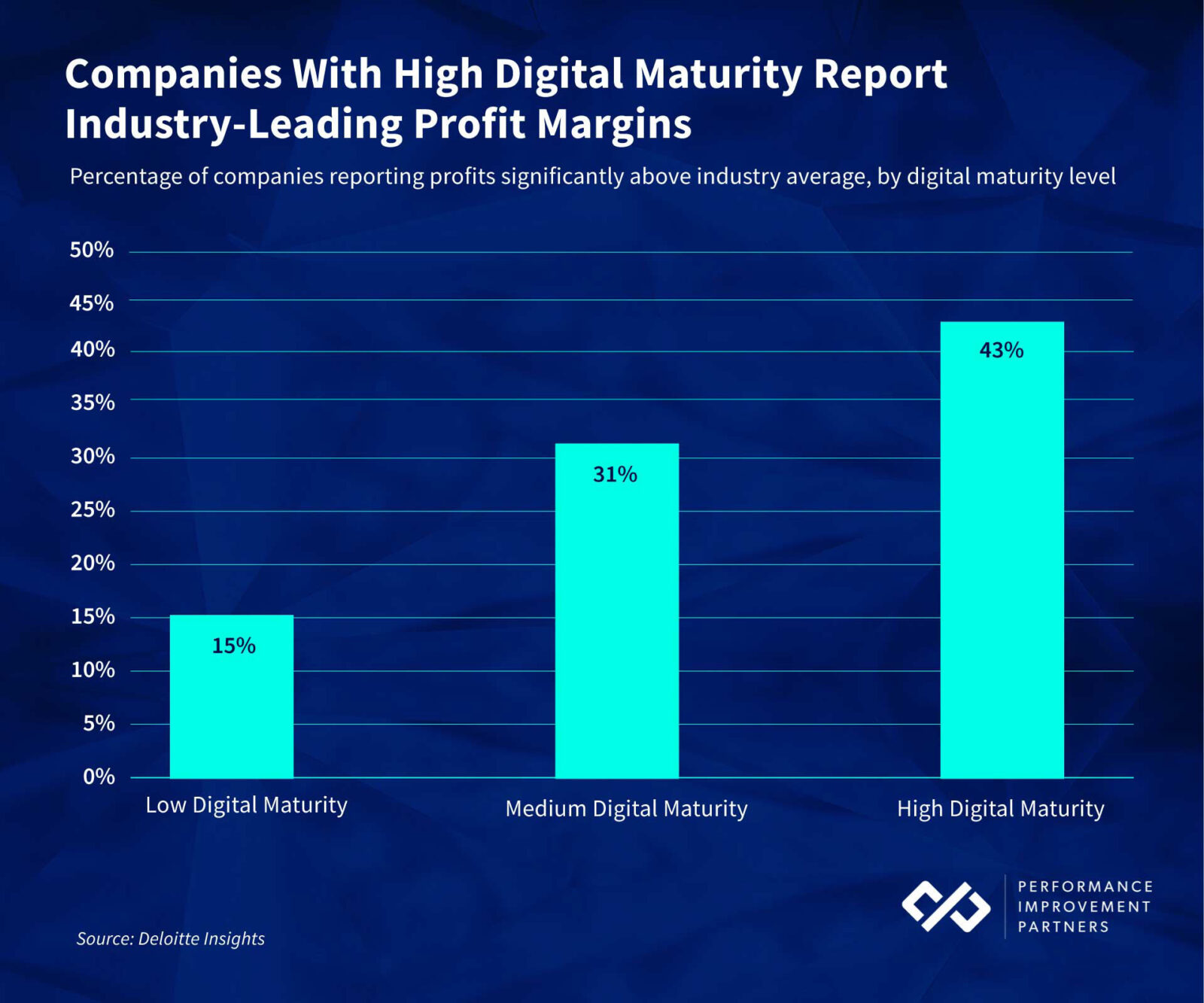Embark on a journey through the realm of DigiLife Digital Transformation Performance Metrics, where data-driven insights pave the path to organizational excellence. Dive into the world of performance metrics that shape the digital transformation landscape, offering a holistic view of progress and success.
As we delve deeper, discover the key components that drive digital transformation and the pivotal role of performance metrics in navigating this transformative journey.
Introduction to DigiLife Digital Transformation Performance Metrics

DigiLife is a fictional company that has embraced digital transformation to enhance its operations and customer experiences. Digital transformation refers to the integration of digital technologies in all areas of a business, fundamentally changing how it operates and delivers value to customers.Performance metrics play a crucial role in digital transformation by providing insights into the effectiveness of the implemented digital strategies and technologies.
These metrics help organizations track progress, identify areas for improvement, and make data-driven decisions to optimize their digital transformation initiatives.
Key Metrics in Assessing Digital Transformation Performance
- Customer Engagement: Measure customer interactions and feedback across digital channels to gauge satisfaction and loyalty.
- Digital Revenue Growth: Track the increase in revenue generated through digital channels to assess the impact of digital initiatives on the bottom line.
- Operational Efficiency: Evaluate the efficiency gains in processes and workflows achieved through digital tools and automation.
- Digital Adoption Rates: Monitor the rate at which employees and customers embrace digital solutions to ensure successful implementation.
- Data Security and Privacy Compliance: Ensure compliance with data protection regulations and assess the effectiveness of security measures implemented during digital transformation.
Types of Digital Transformation Performance Metrics
When it comes to measuring the success of digital transformation initiatives, organizations rely on a variety of performance metrics to track their progress. These metrics help in assessing the impact of digital transformation on different aspects of the business.
Leading vs. Lagging Performance Metrics
Leading performance metrics are proactive indicators that provide early signals of progress towards achieving goals. On the other hand, lagging performance metrics are reactive indicators that measure the outcomes after the fact.
- Leading Metrics: Website Traffic, Social Media Engagement, Customer Satisfaction Scores
- Lagging Metrics: Revenue Growth, Cost Savings, Market Share
Financial Metrics
Financial metrics are crucial for assessing the economic impact of digital transformation efforts. These metrics help in evaluating the return on investment and overall financial health of the organization.
- Revenue Growth: Increase in sales revenue generated through digital channels.
- Cost Savings: Reduction in operational costs due to process efficiencies from digital transformation.
Operational Metrics
Operational metrics focus on the efficiency and effectiveness of business processes impacted by digital transformation. These metrics help in identifying areas for improvement and optimization.
- Time to Market: Reduction in the time taken to launch new products/services in the market.
- Resource Utilization: Optimal allocation of resources to achieve operational goals.
Customer-centric Metrics
Customer-centric metrics measure the impact of digital transformation on customer experience and satisfaction. These metrics are essential for understanding customer behavior and preferences.
- Net Promoter Score (NPS): Measure of customer loyalty and satisfaction with the brand.
- Customer Lifetime Value (CLV): Estimation of the total revenue a business can expect from a single customer over their lifetime.
Implementing Effective Performance Metrics

Effective performance metrics are crucial for measuring the success of digital transformation initiatives. Here, we will explore best practices for selecting relevant metrics, aligning them with organizational goals, and establishing benchmarks for improvement.
Best Practices for Selecting Relevant Performance Metrics
- Identify key business objectives: Start by understanding the strategic goals of the organization and aligning metrics with these objectives.
- Focus on outcomes: Choose metrics that directly measure the impact of digital transformation on business outcomes rather than just tracking activities.
- Keep it simple: Avoid measuring everything and focus on a few key metrics that provide actionable insights.
- Ensure measurability: Select metrics that can be clearly defined, consistently measured, and easily tracked over time.
- Consider industry benchmarks: Compare performance metrics with industry standards to gain a better understanding of where your organization stands.
Aligning Metrics with Organizational Goals
- Collaborate with stakeholders: Involve key stakeholders from various departments to ensure that performance metrics are aligned with overall business objectives.
- Communicate the importance: Clearly communicate why each metric is important and how it contributes to the organization's success to encourage buy-in from all stakeholders.
- Regularly review and adjust: Continuously monitor the relevance of performance metrics and be prepared to adjust them as organizational goals evolve.
Establishing Benchmarks and Setting Targets for Improvement
- Set baseline benchmarks: Establish initial performance benchmarks to measure progress and identify areas for improvement.
- Define realistic targets: Set achievable targets based on historical data, industry benchmarks, and organizational capabilities to drive continuous improvement.
- Track progress: Regularly track and report on performance metrics to measure progress towards goals and make informed decisions for future initiatives.
Monitoring and Evaluating Performance Metrics

Monitoring and evaluating performance metrics is crucial for assessing the effectiveness of digital transformation initiatives. It allows organizations to track progress, identify areas for improvement, and make data-driven decisions to enhance overall performance.
Strategies for Consistent Monitoring of Performance Metrics
- Establish clear goals and objectives for each performance metric to ensure alignment with organizational targets.
- Utilize automated tools and dashboards to streamline data collection and analysis, enabling real-time monitoring.
- Regularly review and update performance metrics to reflect changing business priorities and technological advancements.
- Encourage cross-functional collaboration to gather insights from various departments and ensure a comprehensive view of performance.
Interpreting Data Trends and Making Informed Decisions
- Identify patterns and correlations in the data to understand the impact of digital transformation efforts on key performance indicators.
- Use data visualization techniques such as graphs and charts to present complex information in a clear and actionable format.
- Analyze outliers and anomalies to uncover hidden opportunities or risks that may affect performance metrics.
- Regularly communicate findings to stakeholders and decision-makers to facilitate informed decision-making based on data-driven insights.
Role of Real-Time Analytics in Enhancing Performance Evaluation
- Implement real-time analytics tools to monitor performance metrics continuously and identify issues as they arise.
- Enable proactive decision-making by leveraging real-time data to address challenges and capitalize on opportunities promptly.
- Utilize predictive analytics to forecast future trends and performance outcomes, enabling proactive adjustments to optimize results.
- Integrate real-time analytics into performance management processes to drive agility and responsiveness in the digital transformation journey.
End of Discussion
In conclusion, DigiLife Digital Transformation Performance Metrics serve as the compass guiding businesses towards innovation and growth in the digital era. Embrace the power of data-driven decision-making and watch your organization thrive amidst the ever-evolving technological landscape.













